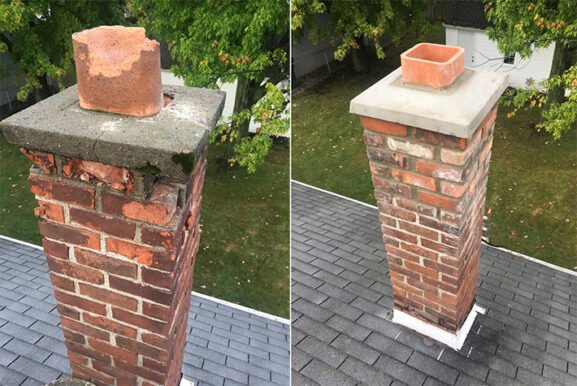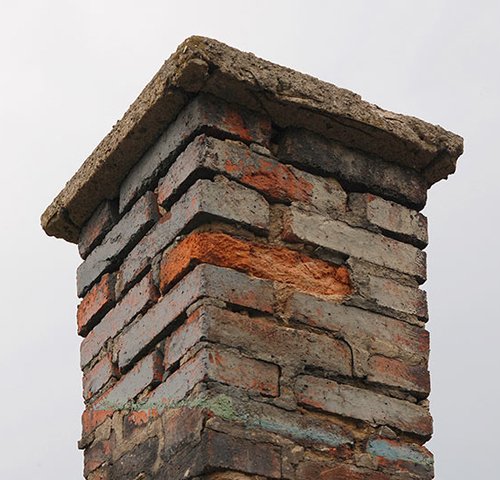Why Homeowners Should Understand the Real Cost of Chimney Repair Today
Key Takeaways
- Chimney repair costs vary widely depending on damage severity, materials, and labor
- Early detection and routine maintenance can prevent high repair bills
- Common repair types include crown repair, tuckpointing, and flue liner replacement
- Hiring certified professionals ensures safe, lasting results and may reduce long-term expenses
Understanding the Factors That Influence Chimney Repair Costs
Chimney repair costs can differ significantly depending on a few core factors. These include the type of repair needed, the extent of the damage, materials used, local labor rates, and even your chimney’s height and accessibility.
For example, repairing a small crack in a brick chimney might cost just a few hundred dollars. But if water damage has led to structural issues, the price can quickly escalate into the thousands. Homeowners should also consider regional price fluctuations. For instance, those living in areas with high seasonal demand for chimney services, like the Northeast, may see slightly higher costs during peak times.
Being aware of these cost drivers can help you budget more effectively and avoid surprises during your next chimney service.
Common Types of Chimney Repairs and Their Price Ranges
The price of chimney repair largely depends on the kind of work required. Here’s a closer look at typical services and their associated costs:
Tuckpointing Damaged Mortar Joints
Tuckpointing involves removing deteriorated mortar from between bricks and replacing it with new mortar. This is essential to prevent water infiltration and preserve structural integrity. On average, tuckpointing costs range from $8 to $30 per square foot depending on the extent of deterioration and scaffold access.
Chimney Crown Repair or Rebuilding
The crown is the concrete slab on top of your chimney that protects it from water damage. Small cracks in the crown may cost $150 to $400 to repair. If the crown is heavily damaged and needs full rebuilding, expect costs between $800 and $2,500 depending on the size and complexity.
Flue Liner Replacement
The flue liner protects your home from heat and combustion byproducts. If it’s cracked or deteriorated, replacing it is critical. Stainless steel liners range from $2,000 to $5,000 or more, while clay liner repairs may be slightly cheaper but less durable. In some older homes, relining is required to meet modern safety codes.
Chimney Flashing Repairs
Flashing seals the junction between your roof and chimney. Damaged flashing is a common cause of chimney leaks and typically costs $300 to $800 to replace, depending on roof height and materials.
Signs That Your Chimney May Need Immediate Repair
Not all chimney problems are visible, but certain warning signs should prompt immediate attention. These include:
- Water stains on interior walls near the chimney
- Crumbling mortar or visible brick damage
- A strong, unpleasant odor coming from the fireplace
- Smoke backing up into the home
- Pieces of flue tile found in the firebox
Ignoring these signs can lead to serious issues like structural collapse, fire hazards, or costly water damage. In worst-case scenarios, structural repairs may exceed $5,000 to $10,000, especially if a leaning chimney threatens the home’s stability.
How Routine Inspections Can Save You Thousands
One of the best ways to avoid high chimney repair costs is through routine maintenance and inspections. According to the Chimney Safety Institute of America (CSIA), chimneys should be inspected at least once a year and cleaned as needed.
During inspections, certified professionals can identify early signs of wear—like hairline cracks in the crown or deteriorating mortar—before they escalate into major problems. Investing $100 to $300 annually in inspections and cleanings can significantly extend the lifespan of your chimney and reduce repair bills.
Regional Differences and Seasonal Considerations
Where you live plays a major role in how much you’ll pay for chimney repairs. In areas with cold, wet winters—like New York, New Jersey, or the Midwest—chimney structures experience more freeze-thaw cycles, which accelerate deterioration. As a result, these regions often see higher demand for repairs during spring and fall.
Booking inspections and services during the summer or early spring may help avoid peak-season surcharges and scheduling delays. Some contractors even offer off-season discounts, which can provide additional savings for proactive homeowners.
Why Hiring Certified Chimney Professionals Matters
It might be tempting to hire a general handyman or go with the cheapest quote, but when it comes to chimney repair, cutting corners often leads to bigger issues. Poor workmanship can result in failed inspections, recurring leaks, and unsafe venting.
Look for technicians certified by organizations like the CSIA or the National Fireplace Institute (NFI). These professionals follow strict safety guidelines and are trained in the latest repair methods and materials.
Hiring the right professional may cost more upfront, but it minimizes future risks and repair needs. Additionally, a well-maintained and safe chimney can boost your home’s value and provide peace of mind during cold weather seasons.
Estimating Your Repair Budget Without Overpaying
Before hiring anyone, it’s smart to get at least two or three quotes from reputable chimney contractors. Make sure the estimates include detailed information about labor, materials, and expected timelines. Ask whether the contractor will pull necessary permits and if the work includes a warranty.
Also, clarify if the estimate covers cleanup and debris disposal. These additional charges can sneak into the final invoice if not discussed upfront.
Online calculators can offer rough price ranges based on your zip code and chimney type, but they’re no substitute for a professional inspection. Think of the estimate process as a tool for planning—not just for pricing.
Making Informed Choices That Protect Your Home
Understanding the cost of chimney repair is about more than just pricing parts and labor. It’s about protecting your home from preventable damage, reducing safety risks, and maximizing the lifespan of your chimney system. With proactive inspections, awareness of regional pricing trends, and a commitment to hiring qualified professionals, homeowners can make decisions that are both financially and structurally sound.

